In the world of specialty coffee, Bourbon is not merely a coffee variety but a symbol of quality and long-standing heritage. Dubbed the “queen” of Arabica coffee, Bourbon has captured the hearts of coffee connoisseurs worldwide thanks to its sweet, complex, and refined distinctive flavor. Let’s explore with Hello 5 Coffee the details of this precious coffee variety!
What is Bourbon Coffee?
Bourbon coffee is a subspecies of Arabica (Coffea arabica), considered one of the two most important original Arabica varieties along with Typica. Bourbon is a natural variant that evolved from Typica, playing an extremely important role in global coffee genetics. The name Bourbon originates from the French island of Bourbon (now Réunion Island) in the Indian Ocean – where this coffee variety was first cultivated and developed outside the original Ethiopian homeland.
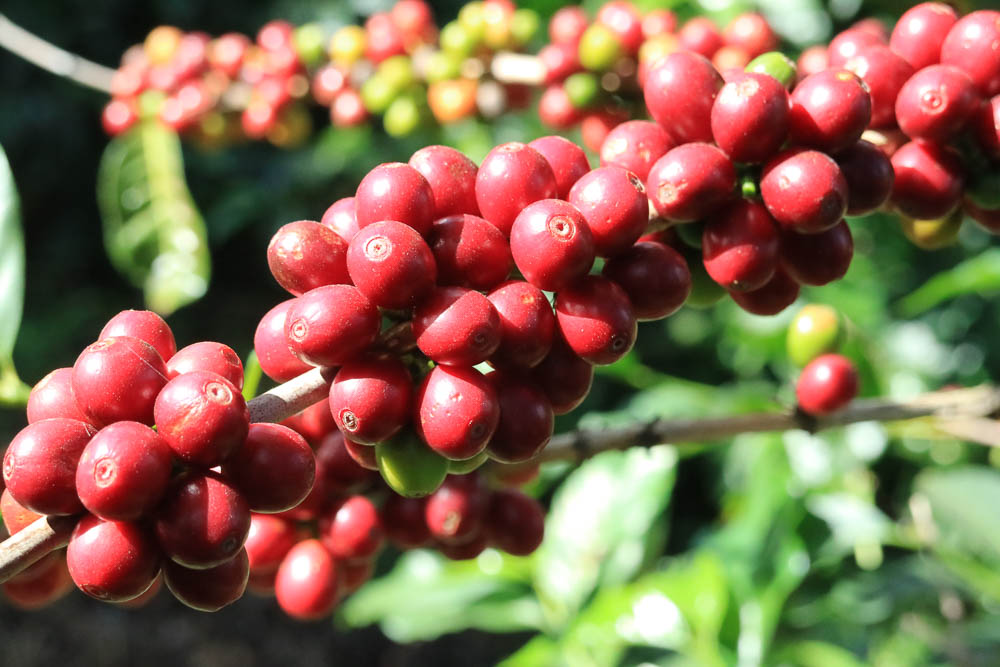
What’s special is that Bourbon is not just a single variety but an entire genetic family with many variants and sub-lines. Bourbon has become the genetic foundation for numerous modern hybrid coffee varieties, contributing valuable genes for flavor quality to subsequent coffee generations.
Biologically, Bourbon trees have quite distinct identifying characteristics. The tree typically has a single main trunk if imported from Yemen, while if originating from Ethiopia, the tree will develop multiple trunks from the base. The secondary branches of Bourbon coffee trees grow at an angle of approximately 60 degrees from the main trunk, creating a characteristic easily recognizable shape.
Bourbon coffee beans have a significantly rounder shape compared to Typica and other Arabica varieties, this is one of the most important identification signs. When ripe, Bourbon cherries can be red, orange, yellow, or even pink depending on the specific cultivar, with red and yellow fruits being most common in the market.
Origin of Bourbon Coffee
The story of Bourbon begins in the legendary land of Ethiopia – the cradle of Arabica coffee. However, the journey to becoming an independent coffee variety for Bourbon originated from a remote island in the Indian Ocean.
In the early 18th century, specifically in 1715, the French brought Arabica coffee plants from the port of Mocha in Yemen to cultivate on Bourbon Island (now Réunion Island), near Madagascar. This was part of the strategy to expand coffee production by European colonial powers during that period. The first coffee trees planted on Bourbon Island were Typica lines from Yemen.
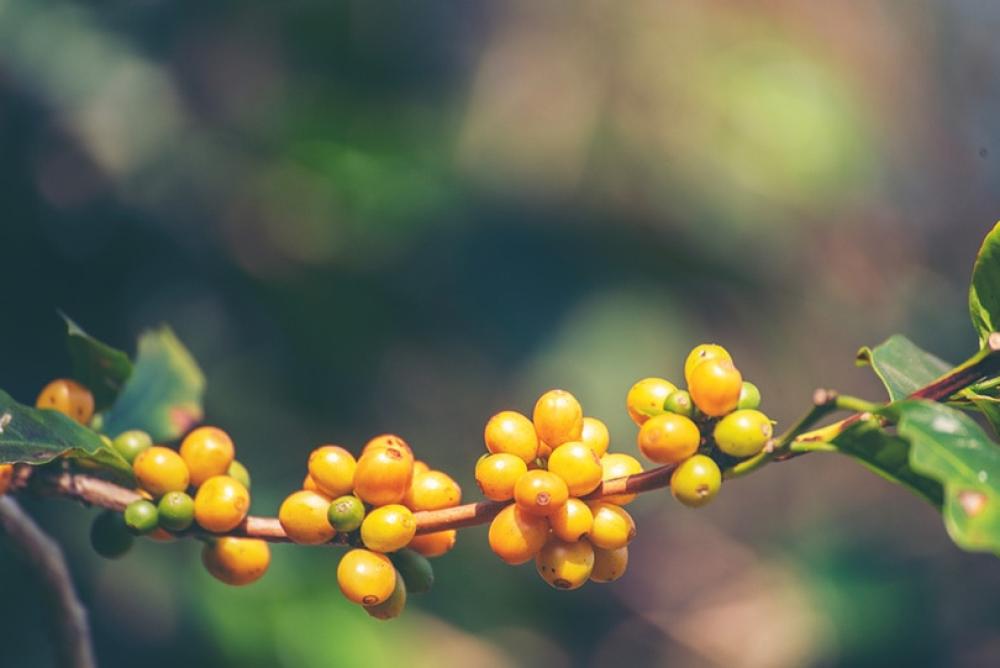
However, in the new environment with tropical island climate, fertile volcanic soil, and different ecological conditions, the coffee plants underwent natural mutation and selection processes over many generations. Gradually, a new coffee variety with distinct genetic characteristics formed – that is Bourbon as we know it today. This difference is clearly manifested through rounder bean shapes, yields about 20-30% higher than Typica, and characteristic sweet flavor.
From Réunion Island, Bourbon’s journey continued to spread. In the mid-19th century, specifically in 1860, Bourbon was brought to Brazil – the country that would become the world’s largest Bourbon grower. In southern Brazil, Bourbon quickly developed strongly and spread to the North and Central America.
Simultaneously, in the 19th century, French missionaries brought Bourbon to many African countries such as Rwanda, Burundi, Tanzania, and Kenya, where this coffee variety found ideal conditions to develop. In Vietnam, the French also introduced Bourbon in 1875, establishing coffee plantations in the farm style in Da Lat and the Central Highlands.
Interestingly, Bourbon was later also called Moka or Mocha coffee, named after the port of Mocha in Yemen – the departure point of the ancestor coffee trees. In Vietnam, after harvesting and processing, Da Lat Bourbon coffee was introduced to the international market under the brand “Arabica du Tonkin,” famous for its distinctive delicious flavor.
Biological Characteristics of Bourbon Coffee Trees
Bourbon coffee trees have unique biological characteristics that distinguish them from other Arabica varieties, from external morphology to environmental growth requirements.
Morphologically, Bourbon trees have a main trunk that develops vertically with lateral branches that are relatively shorter than Typica. The average height of mature trees ranges from 2.5 to 3.5 meters, depending on cultivation conditions and pruning methods. The most distinctive feature is the secondary branches that grow at approximately 60 degrees from the main trunk, creating a sharper angle compared to other varieties, making Bourbon easy to identify.
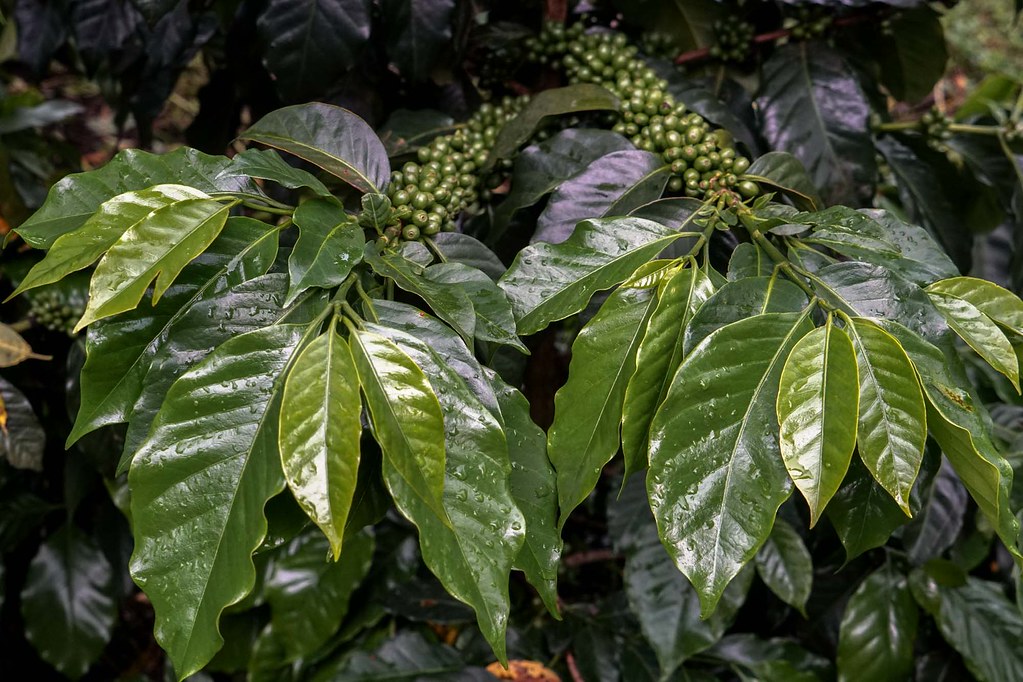
Bourbon tree leaves have distinctive characteristics. Young leaves when newly sprouted are bright green or sometimes have a light bronze-yellow tint. When mature, leaves are larger, broad oval-shaped with a more wavy surface compared to Typica leaves. The leaf surface is dark green, glossy, with leaf tips usually having a characteristic round shape. Bourbon’s canopy is quite dense thanks to high secondary branch density.
Bourbon coffee flowers are pure white, growing in dense clusters along the nodes on branches. Each flower cluster can contain 5-15 blossoms, emitting a gentle, pleasant fragrance, especially intense in early morning. Bourbon flowers are self-pollinating, not requiring insect assistance.
Bourbon fruits are the most important identifying feature. Cherries are medium-sized, round oval-shaped, and grow tightly together in dense clusters on branches – fruit density is about 20-30% higher than Typica. This is also why Bourbon has higher yields than its ancestor variety. When ripe, depending on the variant, fruits can turn bright red (Red Bourbon), yellow-orange (Yellow Bourbon), pink-orange (Pink Bourbon), or orange (Orange Bourbon). The beans inside have a characteristic round shape, distinctly different from Typica’s elongated beans.
Physiologically, Bourbon trees have slower growth rates than modern commercial coffee varieties like Catimor or Catuai. The time from planting until the first commercial harvest typically takes about 3-4 years. The flowering and fruiting cycle depends heavily on the rainy season, usually concentrated in one main crop per year.
Bourbon has quite high requirements for growth conditions. Trees develop best at altitudes from 1000 to 2000m above sea level, where cool temperatures range from 15-24°C. Ideal rainfall is 1500-2500mm/year, evenly distributed with a distinct dry season of about 2-3 months to stimulate flowering. Air humidity should be maintained at 70-80%. The best planting soil is nutrient-rich volcanic soil, loose, well-drained with pH from 6.0-6.5.
A weakness of Bourbon is relatively low disease resistance. Trees are susceptible to coffee leaf rust, coffee wilt disease, and various stem borers and fruit borers. Therefore, caring for Bourbon requires meticulousness, experience, and professional knowledge from growers. Regular pest and disease control programs are needed, along with proper fertilization and irrigation regimes.
Although Bourbon’s yield is about 20-30% lower than modern hybrid varieties, this is completely compensated by superior bean quality, helping Bourbon always maintain high commercial value in the specialty coffee market.
Distinctive Flavor of Bourbon Coffee
Flavor is precisely the reason why Bourbon is sought after and cherished in the global specialty coffee community, despite low yields and high care costs. Bourbon is dubbed the “queen” of Arabica coffee by many experts and coffee connoisseurs thanks to its captivating and mesmerizing flavor profile.
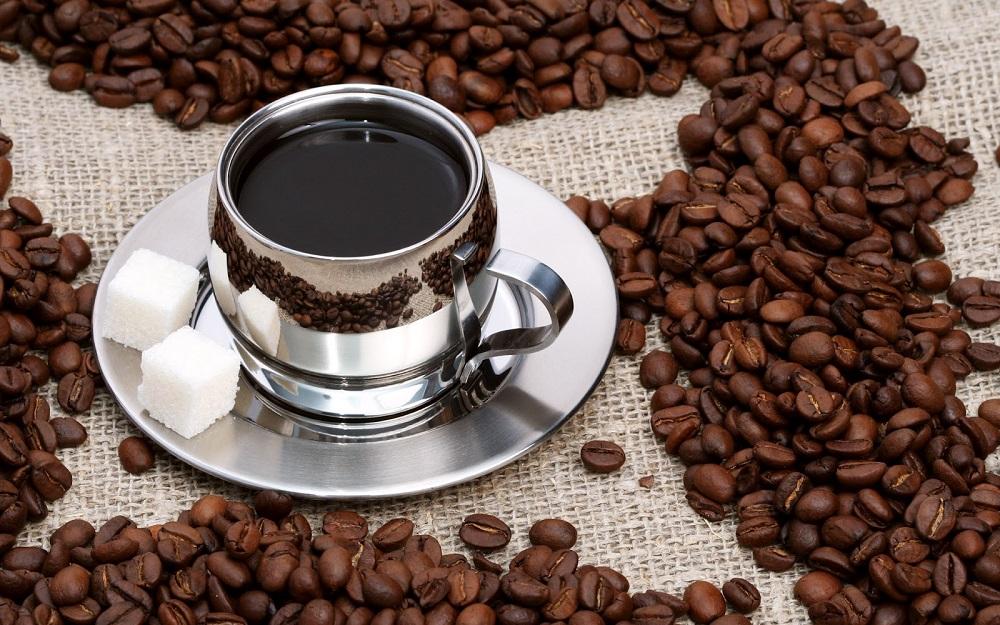
The most prominent characteristic of Bourbon is its distinctive natural sweetness. Compared to other Arabica varieties, Bourbon contains significantly higher sucrose content, creating natural sweetness like caramel, honey, or brown sugar. This sweetness is not harsh or unpleasant at all but very smooth, spreading evenly on the tongue and perfectly harmonizing with other flavor layers. Many people describe Bourbon’s sweetness like the sweetness of spring – fresh, gentle, and full of life.
Regarding acidity, Bourbon possesses bright acidity at medium level, slightly lower than Typica but still sufficient to create vibrancy for the coffee cup. This acidity is not sharp or harsh but very clean and pleasant, often reminiscent of the gentle tartness of ripe fruits like apples, ripe plums, or various berries. With rich organic acid content, Bourbon brings complexity and depth to the flavor, while perfectly balancing with natural sweetness.
Body (richness) of Bourbon is typically medium to full, creating a smooth, gentle feeling on the tongue – what coffee experts often describe as “velvety” or “silky.” This texture makes each sip of Bourbon coffee complete and satisfying.
Regarding aroma and aftertaste, Bourbon typically brings characteristic notes of milk chocolate, nuts like almonds, hazelnuts, walnuts, accompanied by hints of gentle vanilla. Depending on the growing region and processing method, additional floral notes like jasmine, orange blossom, or tropical fruit aromas like peach and apricot may appear. Bourbon’s aftertaste is long-lasting, clean, and leaves no unpleasant feeling in the mouth – a sign of high-quality coffee.
Overall, Bourbon possesses perfectly balanced flavor between sweet, sour, and bitter, with high complexity and multiple flavor layers. When tasting, a delightful feeling immediately appears, making the drinker want to explore each flavor nuance in the coffee cup.
Of course, the specific flavor of Bourbon will vary depending on many factors such as terroir (soil, climate, altitude), processing method (washed, natural, honey, anaerobic), roast level, and brewing method. Bourbon from Central America may have brighter acidity with prominent chocolate and caramel notes. African Bourbon often carries more complex fruity flavors with floral and berry notes. Yellow Bourbon typically has higher sweetness and gentler acidity compared to traditional Red Bourbon.
Popular Bourbon Coffee Varieties
Bourbon is not a single variety but an entire rich genetic family with many natural variants and selected sub-lines. Besides Heirloom and Typica, Bourbon is one of the three main Arabica variety groups, playing a foundational role for many modern coffee varieties.
Pure Bourbon Lines
- Red Bourbon is the traditional and most common variant, with ripe cherries having a bright red color. This is the flavor standard for Bourbon with high sweetness, bright acidity, and perfect balance. Red Bourbon is widely grown in Brazil, Rwanda, Burundi, and many other countries, accounting for about 40% of Brazil’s total coffee production along with Typica.
- Yellow Bourbon appeared due to natural mutation, with ripe cherries having a brilliant yellow-orange color instead of red. Notably, Yellow Bourbon typically has higher sweetness, smoother body, and gentler acidity than Red Bourbon. Brazil, especially the Sul de Minas region, is the world’s most famous place for growing Yellow Bourbon. This variety is the result of crossbreeding between Amarellow de Botucatu and another Bourbon line.
- Pink Bourbon is a rarer variant, with ripe cherries having a unique pink-orange color. The flavor typically lies between Red and Yellow Bourbon with high sweetness, prominent fruity notes, and high complexity. However, Pink Bourbon is quite rare in the market.
- Orange Bourbon has orange-colored cherries when ripe, less common than the above lines but also brings its own unique flavor.
Bourbon Pointu / Laurina is a special natural variant discovered on Réunion Island (Bourbon). The notable feature is beans having a pointed shape (pointu in French) and caffeine content only half that of regular Bourbon (about 0.6% compared to 1.2-1.4%). The flavor is extremely refined with high sweetness, complex fruity aroma, and gentle clean acidity. However, Pointu is extremely rare and expensive due to very low yields, only 30-40% of regular Bourbon.
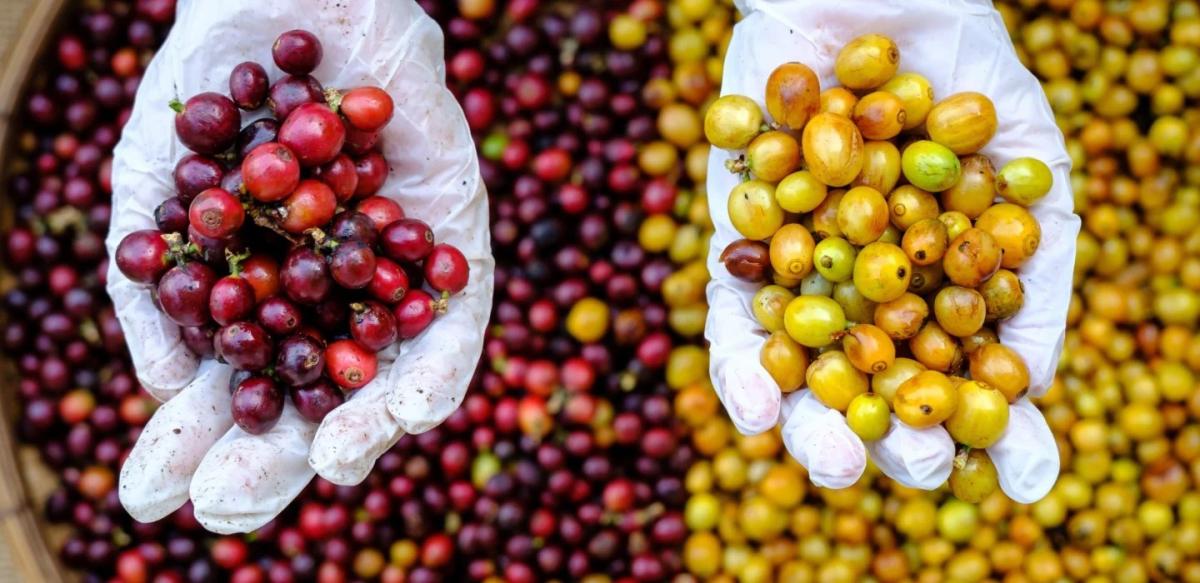
Mutation Variants from Bourbon
- Caturra is a natural variant of Bourbon discovered in Brazil in 1937. Caturra has significantly lower height (dwarf mutation), only about 2-2.5m, making harvesting easier. Yields are higher than Bourbon but flavor still retains many good characteristics. Caturra is very popular globally, especially in Colombia and Central America.
- Pacas is another natural variant of Bourbon discovered in El Salvador in 1949. Similar to Caturra, Pacas also has low height and higher yields, very popular in El Salvador and Honduras.
- Villa Sarchi is a dwarf variant of Bourbon discovered in Costa Rica, with characteristics similar to Caturra but well-adapted to Costa Rica’s climate.
Selected Bourbon Lines
- N39 is a high-quality Bourbon line specially selected and developed.
- SL28 and SL34 are two Bourbon lines selected by Scott Laboratories (Kenya) since the 1930s. They have good drought resistance, excellent cup quality with very distinctive fruity flavors. SL28 and SL34 are the foundation for high-quality Kenyan coffee.
- Tekisik (or Tekisic) is a Bourbon line selected in El Salvador, well-adapted to local conditions.
- Mibirizi is a Bourbon line grown in Rwanda and Burundi, famous for special quality.
- Jackson is a Bourbon variant discovered in Rwanda, with distinct characteristics in morphology and flavor.
- Acaia is a Bourbon line grown in Brazil with relatively high yields.
- Moka/Mocha/Mokka is the name for Bourbon in some regions, especially in Vietnam, named after the port of Mocha in Yemen.
Hybrid Varieties Originating from Bourbon
- Mundo Novo is the result of natural crossbreeding between Bourbon (Red Bourbon) and Typica (Sumatra) discovered in Brazil in the 1940s. This variety has high yields, strong plants but still maintains good quality, very popular in Brazil.
- Yellow Catuai is a hybrid between Mundo Novo and Yellow Caturra, inheriting the yellow color and part of Yellow Bourbon’s flavor.
- Red Catuai is the red-fruited version of Catuai, also very popular in Central and South America.
- Many other modern varieties like Pacamara (cross between Pacas and Maragogype), or disease-resistant varieties like Catimor and Sarchimor also carry part of the genetics from Bourbon through sub-lines.
Interestingly, in many countries, farmers have self-selected and developed local Bourbon lines suitable for specific conditions, creating rich diversity for the Bourbon family. In El Salvador, for instance, many farms grow crosses between Red Catuai and Bourbon, producing delicious coffee beans with distinct characteristics.
Bourbon Coffee Growing Regions Worldwide
Bourbon Coffee Around the World
Bourbon is one of the most widely grown coffee varieties in the world, thanks to its excellent quality and good adaptability to many different environments. Currently, this coffee variety is present in most Arabica coffee-growing countries, from the Americas to Africa and Asia.
Latin American region remains the largest Bourbon growing area in the world. Here, coffee production mainly relies on two varieties, Typica and Bourbon, from the 19th century to the present.
- Brazil is the largest Bourbon-growing country, with about 40% of the country’s total coffee production coming from Bourbon and Typica, where the proportion of these two varieties accounts for up to 97.55% of Arabica acreage. Bourbon first appeared in Brazil in 1860 in the south, then spread to the North and throughout the country. Famous growing regions include Sul de Minas, Cerrado, Mogiana, and São Paulo. Brazil is especially famous for high-quality Yellow Bourbon, with flavors of chocolate, nuts, caramel, and distinctive sweetness.
- Colombia grows a small amount of Bourbon in specialty farms, mainly in the Huila, Cauca, and Nariño regions. Colombian Bourbon has excellent balance with bright acidity, chocolate, caramel, and tropical fruit flavors.
- El Salvador was once the leading Bourbon-growing country in Central America with local varieties like Tekisik. Although it has now switched to many other varieties, many farms still maintain traditional Bourbon or crosses between Bourbon and Red Catuai, producing high-quality coffee with chocolate, vanilla flavors and bright acidity.
- Costa Rica also has a long tradition of growing Bourbon, especially the Villa Sarchi line. Costa Rican Bourbon is often processed using the honey process method, creating high sweetness and smooth body.
- Guatemala, Honduras, Nicaragua, Mexico, and other Central American countries also grow Bourbon in specialty farms, each place creating distinct flavor profiles depending on terroir.
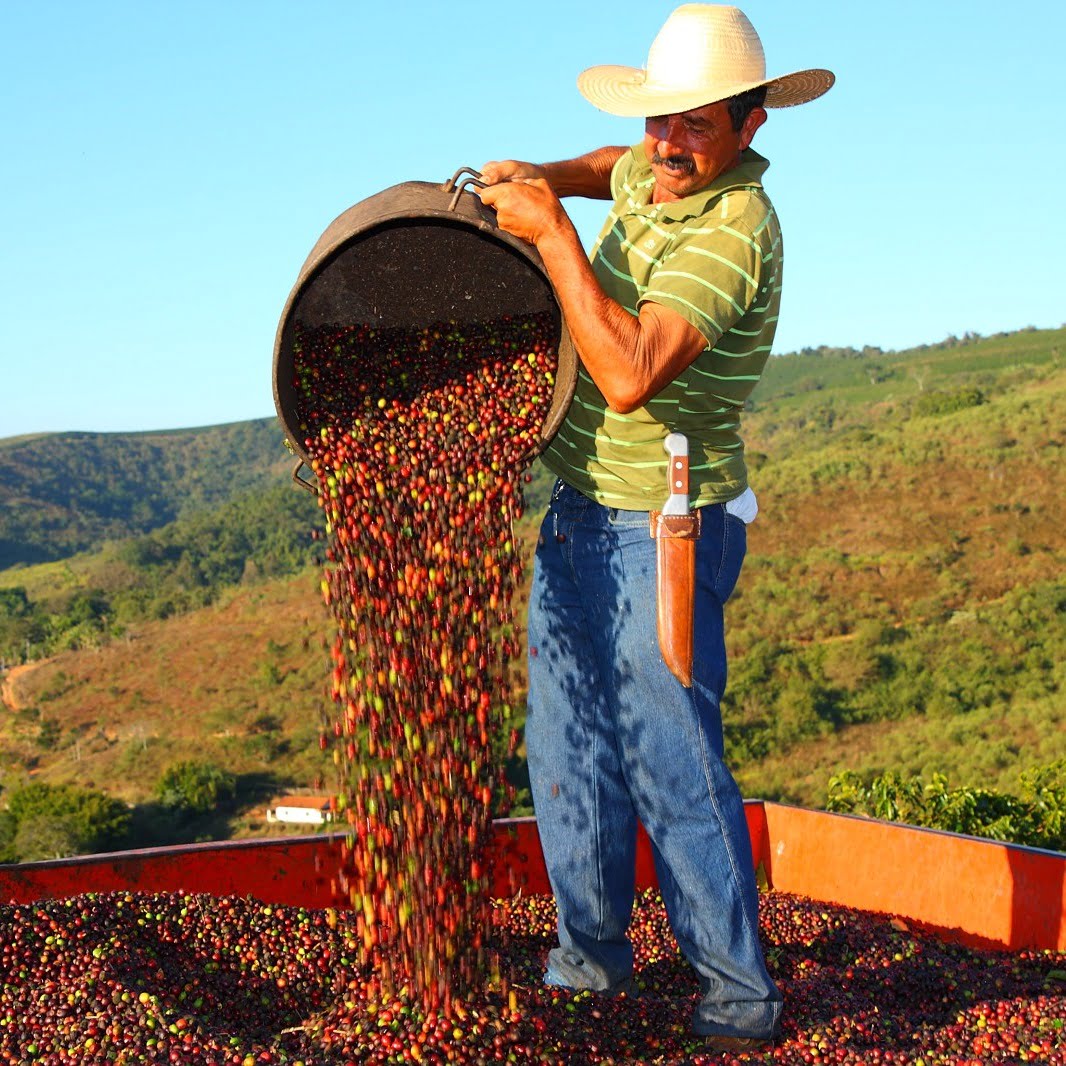
Africa is where the world’s highest quality Bourbons are produced thanks to ideal conditions in altitude, climate, and soil.
- Rwanda and Burundi are the two most famous East African countries for specialty Bourbon. Thanks to ideal altitude (1700-2000m), fertile volcanic soil, cool climate, and suitable rainfall, Bourbon from here has bright brilliant acidity, complex fruity flavors (cherry, berry, citrus, plum), high sweetness, and amazing cleanliness. Rwandan and Burundian Bourbon is typically carefully wet-processed at professional washing stations, producing coffee scoring 85+ on a 100-point scale.
- Tanzania and Kenya grow the French Mission Bourbon line brought by French missionaries. Although acreage is not large, Bourbon from this region has excellent quality with bright brilliant acidity, red fruit flavors, and high complexity. Kenyan SL28 and SL34 are famous Bourbon selections that have become the foundation for Kenyan specialty coffee.
- Malawi also grows a small amount of high-quality Bourbon, mainly in the northern highlands.
Other regions like the Dominican Republic, Haiti, Puerto Rico, Papua New Guinea, Peru, Australia, and even Sumatra (Indonesia) also have Bourbon cultivation in specialty farms, although quantities are limited.
Each region creates unique characteristics for Bourbon due to differences in terroir, processing methods, and farming techniques, contributing to the richness and diversity of Bourbon coffee worldwide.
Bourbon Coffee in Vietnam
In Vietnam, Bourbon is not yet a common coffee variety like Robusta or Catimor, but is gradually gaining attention in the specialty coffee community. Some pioneering farms have begun experimental Bourbon cultivation with promising results.
The Central Highlands region, especially Da Lat and highland areas of Lam Dong, have suitable climate conditions and altitude for growing Bourbon. Year-round cool temperatures, stable rainfall, and fertile basalt soil create good conditions for tree development. Some farms in Da Lat have experimented with both Red and Yellow Bourbon, producing quality batches with distinctive flavors.
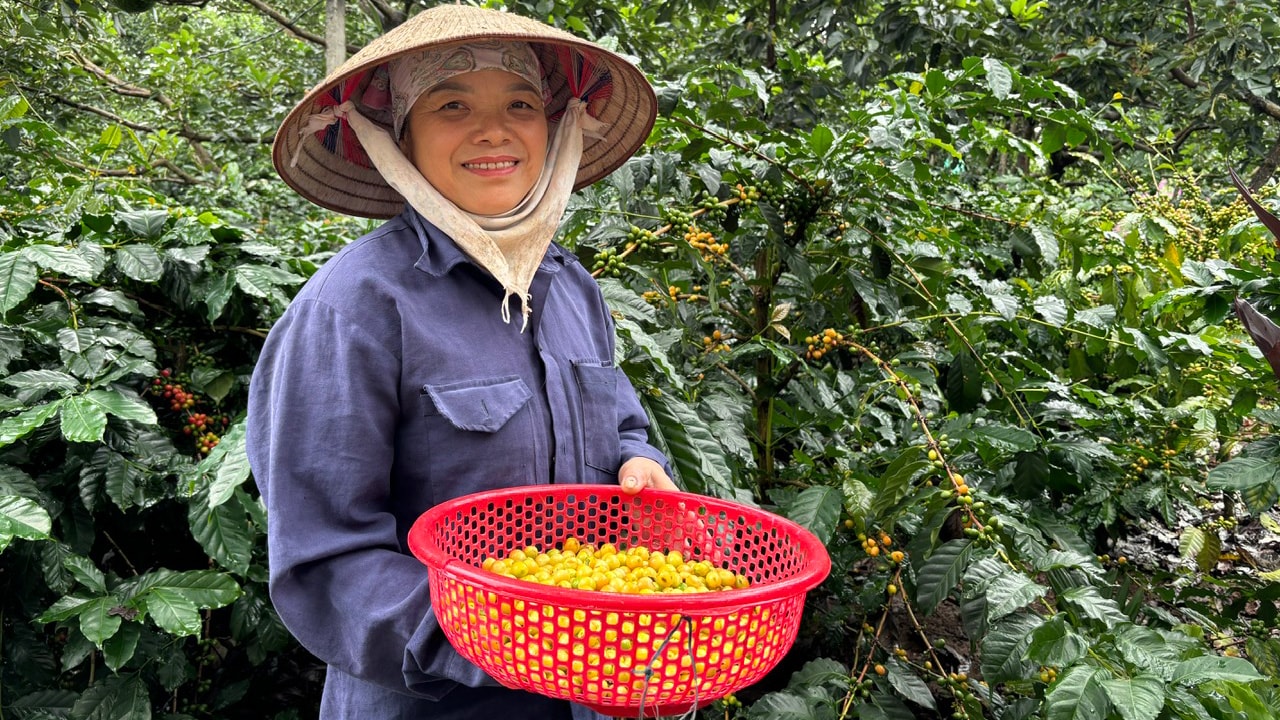
Read more: The Best Arabica Coffee Growing Regions in Vietnam
Vietnamese Bourbon typically has different flavors compared to traditional growing regions. High sweetness, medium body, gentler acidity with dominant chocolate and nut notes. Some coffee batches also have gentle floral notes characteristic of Da Lat’s climate.
The biggest challenge in growing Bourbon in Vietnam is low yields and high care costs. While Vietnamese farmers are accustomed to high-yielding varieties like Robusta or Catimor, switching to Bourbon requires a mindset shift toward quality over quantity. However, with the strongly developing specialty coffee trend, Bourbon has potential to become a premium segment in Vietnam’s coffee industry.
Some Vietnamese specialty coffee brands have begun introducing Bourbon in their menus, creating diversity and enhancing the experience for coffee lovers. This not only helps Vietnamese consumers access premium coffee varieties but also opens opportunities for export to the international specialty coffee market.
Interestingly, you may know that Bourbon coffee grown in Da Lat is considered one of the most valuable coffee lines in Vietnam, with flavors not inferior to today’s world’s leading coffees. This coffee type is also considered rare; currently in Da Lat there are only about 500 trees remaining (according to information from Vietnamese and Japanese coffee experts).
Like Typica coffee, Bourbon was brought to Vietnam by the French in 1875. They established many plantations to develop this coffee type in farm style. Later, Bourbon coffee was called Moka or Mocha coffee, named after the port of Mocha in Yemen.
After harvesting and processing, Da Lat Bourbon coffee was introduced to the market under the Arabica du Tonkin brand, famous for its distinctive delicious flavor. Da Lat Bourbon has unique characteristics unlike anywhere else, with jasmine flower aroma, gentle fruit tartness, blended with the sweet taste of spring.
Bourbon Coffee Pricing
Bourbon coffee commands premium prices in both domestic and international markets, reflecting its superior quality, low yields, and high production costs. Understanding Bourbon pricing helps both consumers and producers appreciate the true value of this exceptional coffee variety.
Factors Affecting Bourbon Coffee Prices
Several key factors determine Bourbon coffee pricing. First, the yield factor plays a crucial role – Bourbon produces 20-30% less than modern hybrid varieties like Catimor or Catuai, meaning farmers need more land and resources to produce the same volume. This inherently drives up the base cost.
Quality and cup score significantly impact pricing. Bourbon coffees scoring 85+ points on the Specialty Coffee Association (SCA) scale can command prices 2-3 times higher than commodity-grade coffee. Exceptional lots scoring 90+ can fetch even higher premiums, sometimes reaching $50-100 per pound at auction.
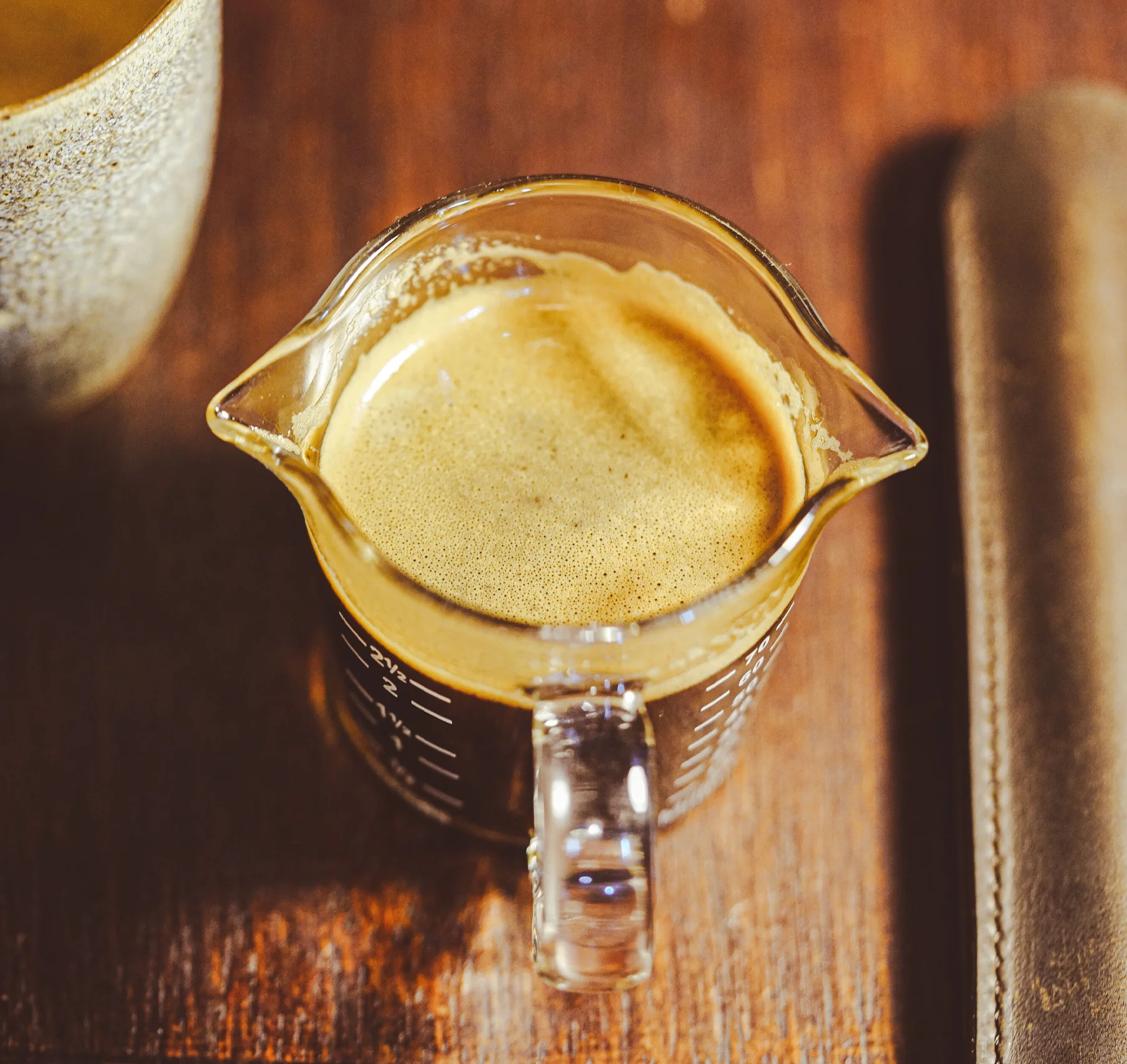
Processing methods also affect final pricing. Washed Bourbon typically commands higher prices due to cleaner, brighter flavors and more labor-intensive processing. Honey and natural processed Bourbons may price differently depending on market demand and execution quality. Experimental processes like anaerobic fermentation can add 20-50% to the base price.
Geographic origin creates substantial price variations. Rwandan and Burundian Bourbons often command premium prices ($8-15 per pound green) due to exceptional quality and international recognition. Brazilian Bourbons, while excellent, may price lower ($4-8 per pound) due to larger supply. Vietnamese Da Lat Bourbon, being extremely rare, can command very high prices in the domestic specialty market.
Global Market Prices
In the international green coffee market, commercial-grade Bourbon typically trades at $3-6 per pound, which is 30-80% higher than commodity Arabica prices. This premium reflects Bourbon’s consistently better cup quality even at commercial grades.
Specialty-grade Bourbon (80-84 points) generally prices between $5-10 per pound in the green market. These coffees offer excellent flavor profiles suitable for specialty cafes and discerning consumers.
Premium specialty Bourbon (85-89 points) commands $10-20 per pound, with some exceptional lots reaching $25-30. These coffees typically come from renowned origins like Rwanda, Burundi, or select Brazilian farms with excellent terroir and processing.
Ultra-premium and competition-grade Bourbons (90+ points) can sell for $30-100+ per pound, sometimes reaching several hundred dollars for award-winning lots. These are typically micro-lots with exceptional quality, traceability, and unique characteristics.
Bourbon Pointu (Laurina) represents the highest price tier, often selling for $50-150 per pound or more due to extreme rarity and low yields. This variety is considered one of the most expensive coffees globally.
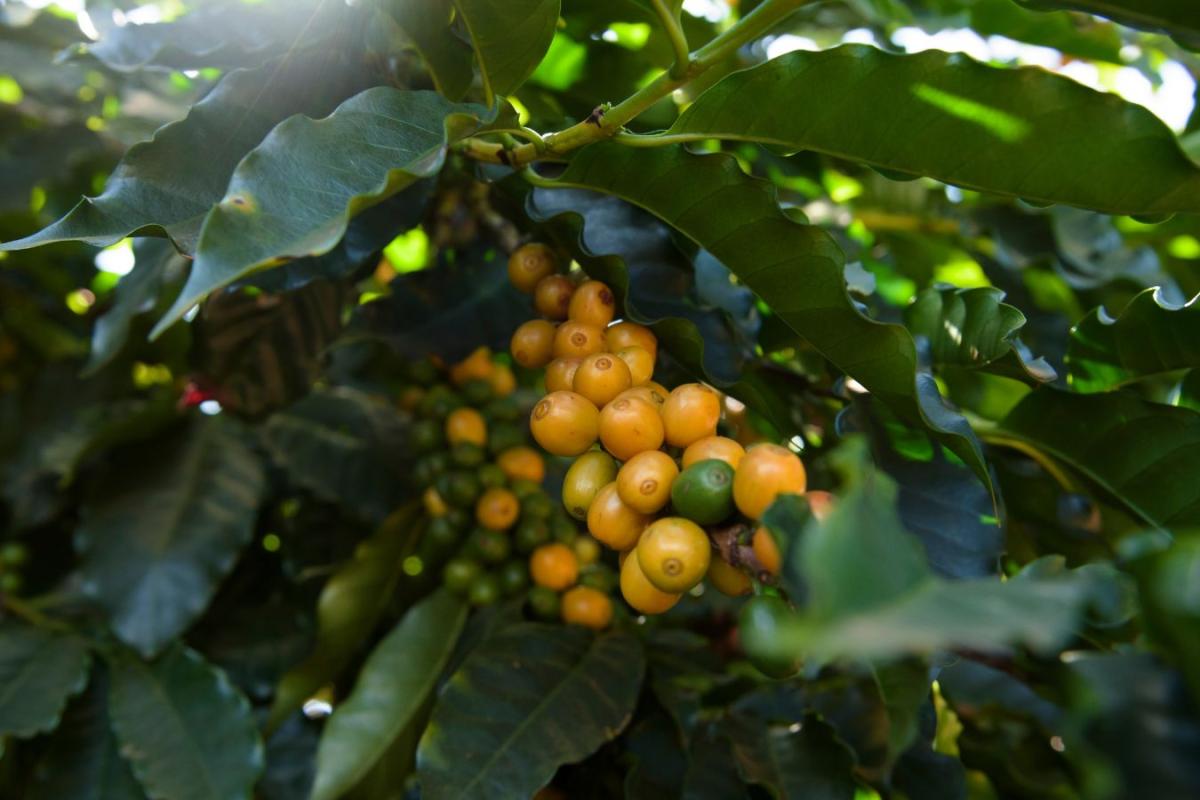
Vietnamese Market Pricing
In Vietnam, Bourbon coffee pricing reflects its rarity and specialty positioning. At the farm level, Vietnamese Bourbon green beans typically sell for 150,000-300,000 VND per kilogram ($6-12 per pound), which is 3-5 times higher than Robusta and 2-3 times higher than Catimor.
Da Lat Bourbon, particularly from the remaining heritage trees, can command even higher prices – sometimes 400,000-600,000 VND per kilogram ($16-24 per pound) for exceptional quality. This pricing reflects both rarity (only about 500 heritage trees remain) and unique flavor characteristics.
At the retail level, roasted Bourbon coffee in Vietnam typically sells for 400,000-800,000 VND per kilogram ($16-32 per pound) in specialty coffee shops, compared to 150,000-300,000 VND for commercial Arabica blends. A cup of Bourbon coffee in Vietnamese specialty cafes usually costs 60,000-120,000 VND ($2.50-5), reflecting the premium beans and careful preparation.
Investment and Economic Considerations
For farmers considering Bourbon cultivation, the economic equation requires careful analysis. While Bourbon commands premium prices, lower yields mean total revenue per hectare may be only 10-30% higher than high-yielding varieties. However, access to specialty markets and direct trade relationships can significantly improve profitability.
Initial investment costs are higher for Bourbon due to longer maturation periods (3-4 years versus 2-3 years for hybrids) and increased need for disease management. However, established Bourbon farms with good quality control can achieve 30-50% higher profit margins compared to commodity coffee farms.
The specialty coffee market’s growth, particularly in Asia, creates increasing demand for high-quality Bourbon. Vietnamese farmers successfully producing excellent Bourbon can access both domestic specialty markets and international export opportunities, where prices can be 2-3 times higher than local commodity markets.
Future Price Outlook
Bourbon coffee pricing is expected to remain strong and potentially increase due to several factors. Growing consumer appreciation for specialty coffee and willingness to pay for quality supports premium pricing. Climate change may reduce suitable growing areas for Bourbon, potentially increasing scarcity and prices. Meanwhile, the development of specialty coffee culture in emerging markets like Vietnam, China, and Southeast Asia creates new demand centers.
However, price sustainability depends on maintaining quality standards, proper marketing, and building direct relationships between producers and buyers. Vietnamese Bourbon producers who can tell their story, ensure traceability, and consistently deliver high quality are well-positioned to command premium prices in the growing specialty coffee market.
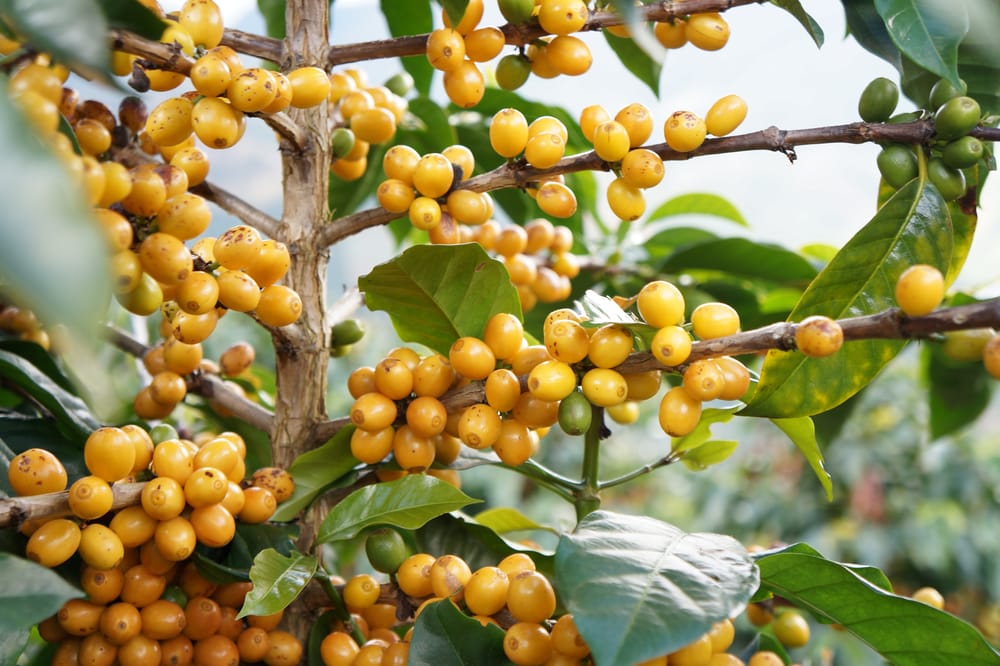
Understanding these pricing dynamics helps consumers appreciate why their cup of Bourbon coffee costs more – it reflects not just better taste, but also lower yields, higher care requirements, and the dedication of farmers who choose quality over quantity. For Hello 5 Coffee and our customers, this premium is an investment in preserving coffee heritage, supporting quality-focused farmers, and enjoying truly exceptional coffee experiences.
Read more: What is Culi coffee?
Bourbon is clear evidence that quality always comes with time and patience. Although yields are not high, this coffee variety has captured the hearts of coffee connoisseurs worldwide through its wonderful flavor and rich cultural heritage. At Hello 5 Coffee, we always respect and cherish special coffee varieties like Bourbon, bringing you the most authentic coffee experiences. Visit us to explore this colorful coffee world together!
